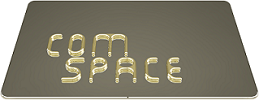The Cocoon 2021 - 2022 offers productivity tools for Advance Steel.
Training Videos 1-7 cover Cocoon and Cocoon Maker aka from Solid to Object, the tool set to convert unknown solids to Advance Steel Sections.
What are Cocoon and Cocoon Maker?
Coccon and Cocoon Maker are apps for Advance Steel helping to convert unknown solids to Advance Steel Sections. Geometry data stored as solids produced by AutoCAD, Inventor, Solidworks, Catia, NX, Pro Engineer, Bentley or Nemetschek products do not store any section proiperties and assemble the section through faces. The only data stored is the outline and length only. So solids are non intelligent geometries which can only be changed through history based solid modelling. This geometry is not parametric and hence cannot be changed through a simple parameter. Cocoon works out the engineering moments of the solid and tries to find a best matching Advance Steel section. It BIMifies so to say a cumbersome traditional history based solid model to a parametric design, which can adopt changes quickly. The Video gives an overview of Cocoon.
Cocoon is the conversion tool, which tries to find a matching parametric section. Cocoon Maker is used to create reference tables for Cocoon. This is required because Advance Steel does not have all Engineering Moments stored within its structural section database neither. Hence a reference file created by Cocoon Maker, which stores a look up table needs to be specified when running Cocoon. ComSpace offers Cocoon with 1014 look up tables matching the default sections database of Advance Steel. Cocoon Maker is only required at this point when using custom sections, which are not part of the default Advance Steel database. The Video below demonstrates on how Cocoon Maker creates a custom reference file.
Where are the 1014 reference tables stored?
The installation folder is:
C:\Program Files\Autodesk\ApplicationPlugins\ComSpaceCocoon2021.bundle
The folder of the reference files, which contains ready to use compilations of individual tables is:
C:\Program Files\Autodesk\ApplicationPlugins\ComSpaceCocoon2021.bundle\sectionlibraries
The folder which contains all 1014 converted Astor Profile Tables is:
C:\Program Files\Autodesk\ApplicationPlugins\ComSpaceCocoon2021.bundle\sectionlibraries\AstorProfiles_ConvertedTables
The Video demonstrates how a list can be compiled.
How to change the language and default paths?
The default language is English. However, if you are a BIM or CAD manager and want to a) have the language translated or b) include any company specific information within the Command Line dialog, you need to refer to:
C:\Program Files\Autodesk\ApplicationPlugins\ComSpaceCocoon2021.bundle\languagepacks\languagecocoon.txt and C:\Program Files\Autodesk\ApplicationPlugins\ComSpaceCocoon2021.bundle\languagepacks\languagecocoonmaker.txt
These files do also store the default paths in a common way. Please refer for Cocoon to line 0 and CocoonMaker to line 0 and 5.
Why is the tool command line driven?
Coccon and Cocoon Maker are command line driven, because it allows them to be included in Macros and Lisp operations. An external form interface would not allow to remote control the commands. Hence the commands can be added or spliced into existing or new automated processes. An automated Lisp routing could be:
1. Solid to AS conversion
2. Automated connections
3. Automated workshop drawings
ComSpace tried to keep the interaction as simple as possible. So you can create different buttons with different company specific settings and reference files.
How about a Trial License?
The Cocoon Suite is free and no trial or commercial license is required.
How to activate Cocoon?
No activation is required.
How to use Cocoon?
Simply switch to the ComSpace Tab and click on the Cocoon button.
The name Cocoon was derived from the process when a caterpillar, which represents the simple immature solid without parameter, becomes a colorful butterfly, which represents a fully parametric structural steel section with all colorful attributes letting the section change or "fly" any time.
1. The first input asks to specify the mapping file with the reference table.
2. Cocoon offers two different options to identify or scan the solid.
You can chose between using the Boundary Points or the Stretch Points.
3. The Boundary method allows to offset the System Line to the top.
4. Older CAD files or solids with holes work best with a tolerance. Maybe the I-Beam section was drawn without fillets for simplicity reason in the past.
5. You don't want to have short plates being modeled using a flat section. Hence you can specify a ratio when the identified solid should be converted to a plate rather a flat section. A plate 150mm x 50mm would have a ratio of three. A 200mm x 50mm solid would convert to a flat section.
6. Enter the maximum thickness to identify a solid as a plate. This option allows existing cubic foundations not accidentally to be converted into for example 600mm thick plates when using a multi selection.
7. Cocoon allows to identify converted solids by moving them either on a layer that a section was found or that it was not able to identify the solid.
What is the difference between Boundary & Stretch?
Both, the Boundary and Stretch Method offer a six point section and a double location verification. The Stretch method is faster but relies on the stretch points, which can cause conversion errors when working with solids having features such as holes. So for the best results using the Stretch Method, the solid must be feature free. If the solid has features and the geometry would fit a box, use the Boundary method. The stretch method allows to convert solids to eight point plates which are not square or rectangular but trapezoidal. The boundary method changes any odd plate shape to a square or rectangular shape.
Tips?
1. Cocoon can become a powerful tool when exporting a Structural Steel Navisworks model to 3D solids with the help of iConstruct.
2. Customize the mapping file containing the look up table to suit your most expected or national standard sections.
3. If SHS or RHS sections don't convert well because of interpolated fillets, use a tolerance around two?


